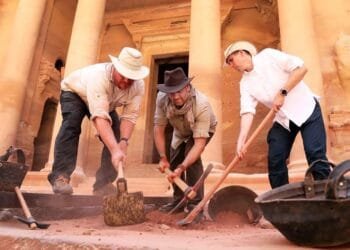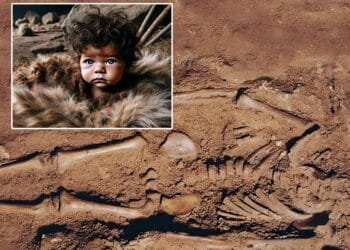Archaeologists in France have excavated a Neolithic site near Clermont-Ferrand containing human remains and artifacts spanning over 4,000 years of occupation.

The extensive site was initially identified during the construction of the A75 highway in the 1980s and further explored during recent expansion work on the highway. The excavation, conducted by archaeologists from France’s National Institute of Preventive Archaeological Research (INRAP), has shed light on the long history of human habitation at the site.
Radiocarbon dating of bone samples has traced human activity back to the Mesolithic period, with the bulk of the findings dating to the Neolithic era, or New Stone Age, which began around 6000 BCE The site remained in use until at least 1000 BCE, showcasing a continuous occupation over millennia.


Among the remarkable discoveries are 285 Neolithic structures, including tombs, dwellings, and various artifacts. Around 63 burials, ranging from simple pit graves to elaborate dry stone structures, showcase a diverse array of funerary practices and tomb architecture. Some tombs contained multiple individuals, suggesting communal burial practices.
Several significant findings have captured the attention of experts, including a burial dating back approximately 6,400 years. In this grave, a preserved skeleton was discovered with a polished deer antler placed on its head, along with other rare funerary offerings. The purpose of these artifacts remains a subject of speculation, with experts suggesting symbolic significance.

Additionally, the excavation uncovered evidence of cremation practices introduced by the fourth millennium BCE. Two tombs containing cremated remains were identified, reflecting changing burial customs over time. The discovery of sacrificial offerings, including sacrificed cattle, further highlights the religious and ceremonial aspects of Neolithic society.
Numerous artifacts have been recovered from the site. Among these finds are ceramic containers, a wild boar tusk possibly used as a bracelet, and a finely crafted double-headed ax made from serpentinite. The exceptional workmanship of the ax suggests advanced skills in stone tool production during the Neolithic period.

The excavation has also revealed shifts in settlement patterns and population density over time. While the site initially served as a habitation area, it eventually transitioned into a dedicated burial ground, indicating changes in societal organization and land use.

































